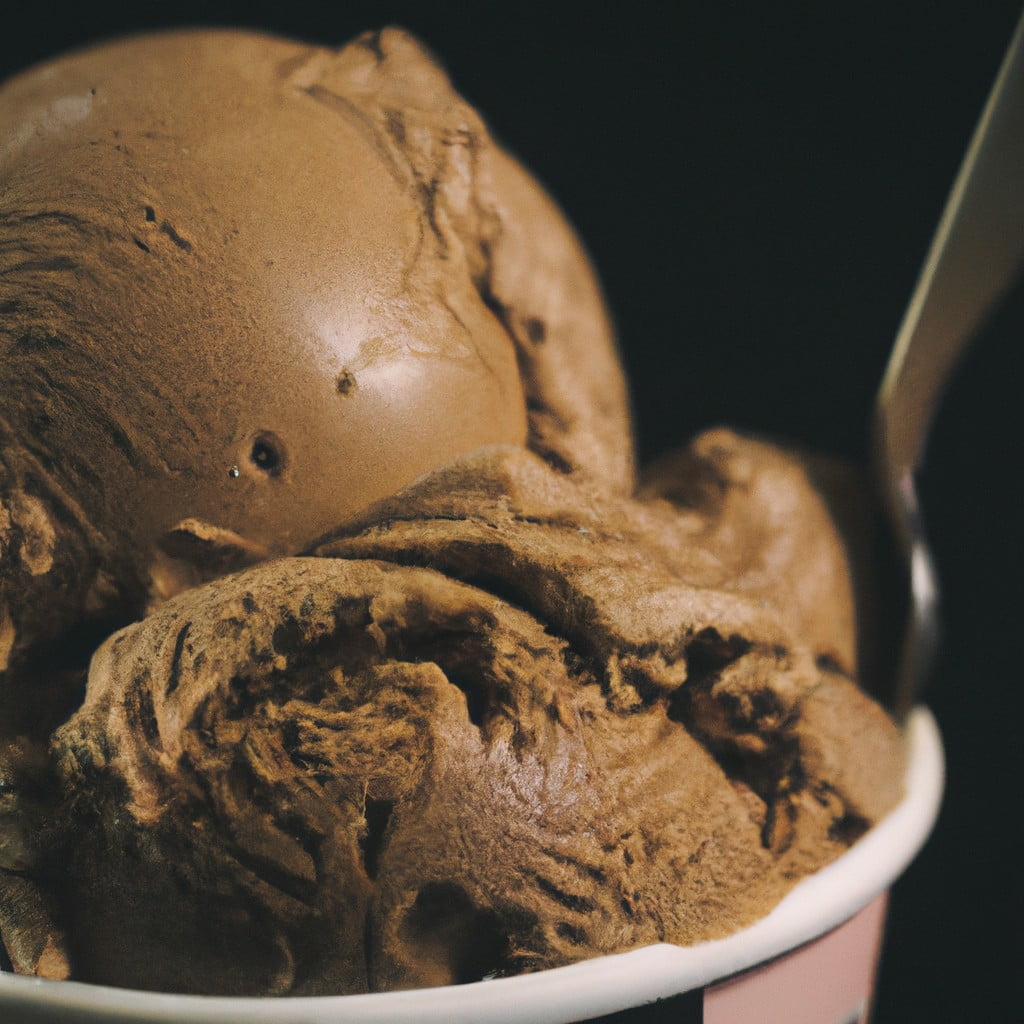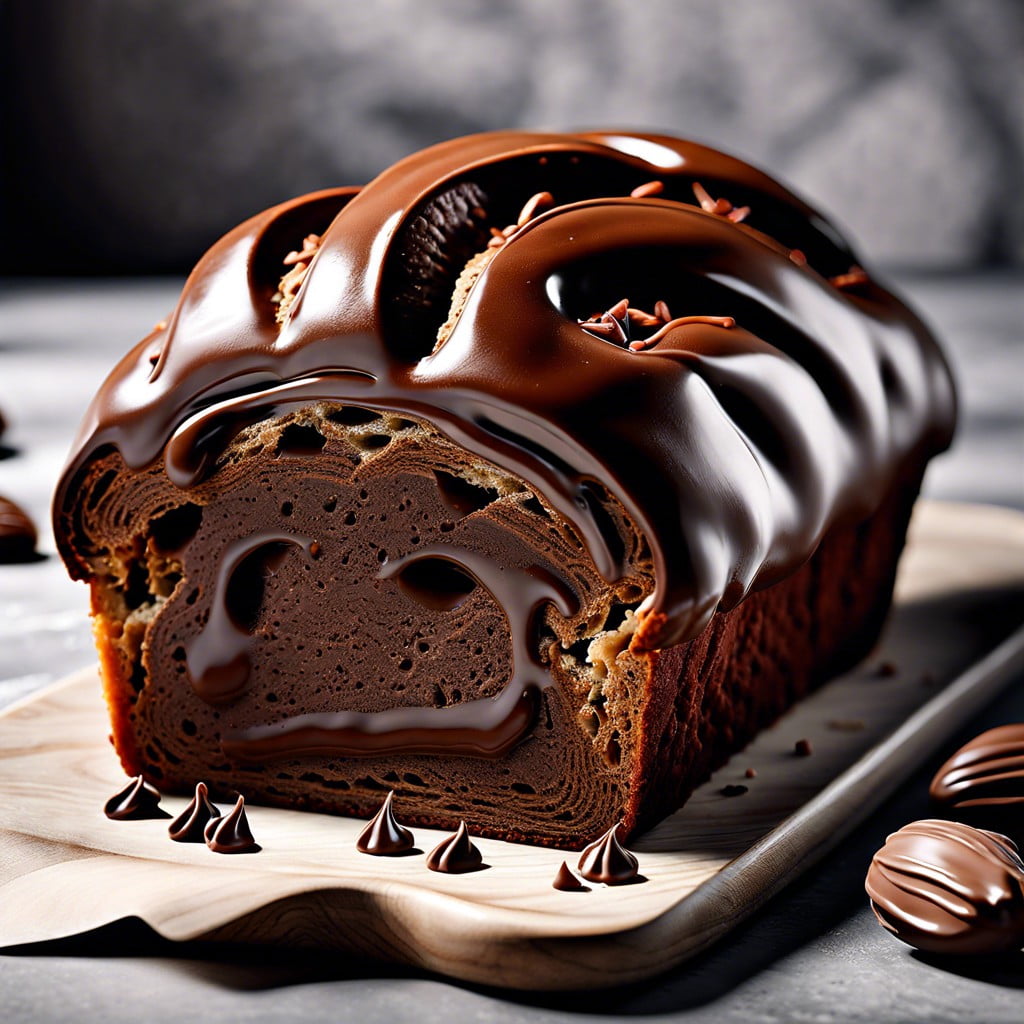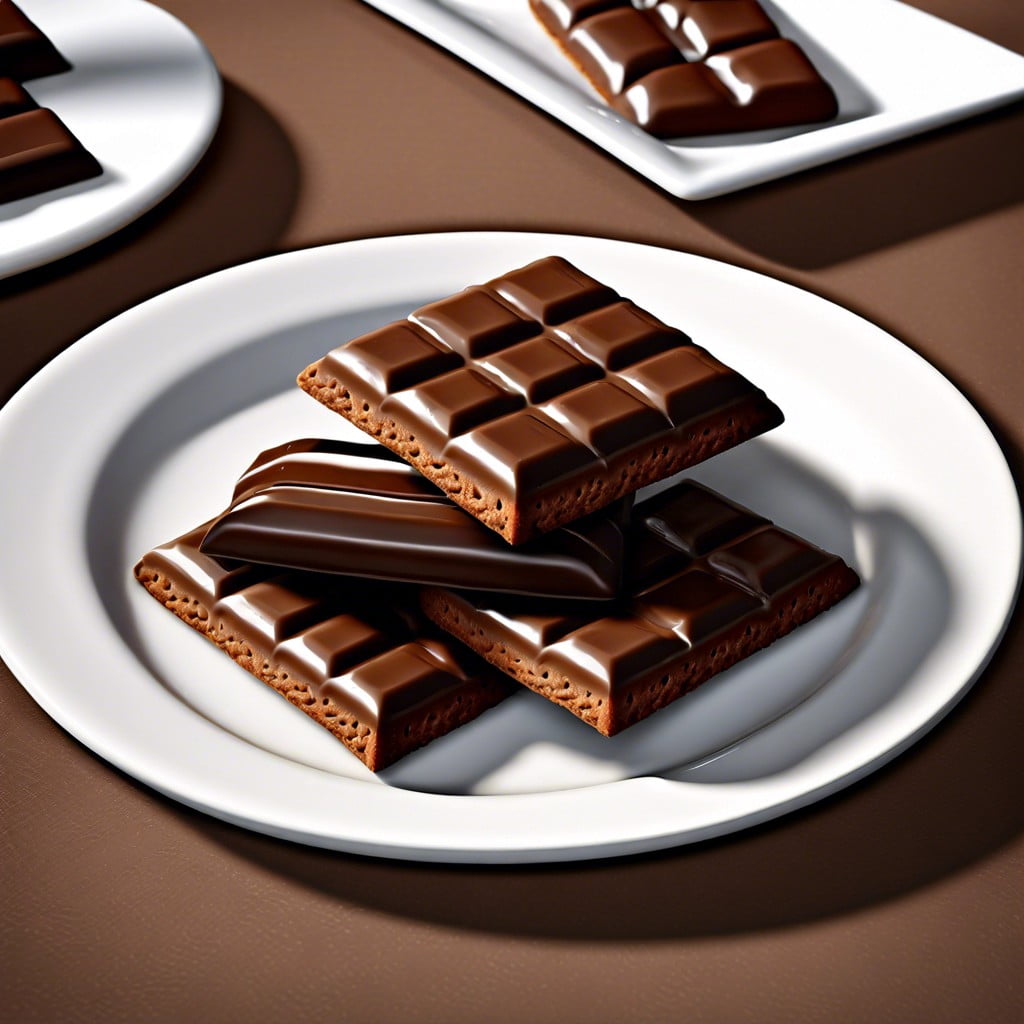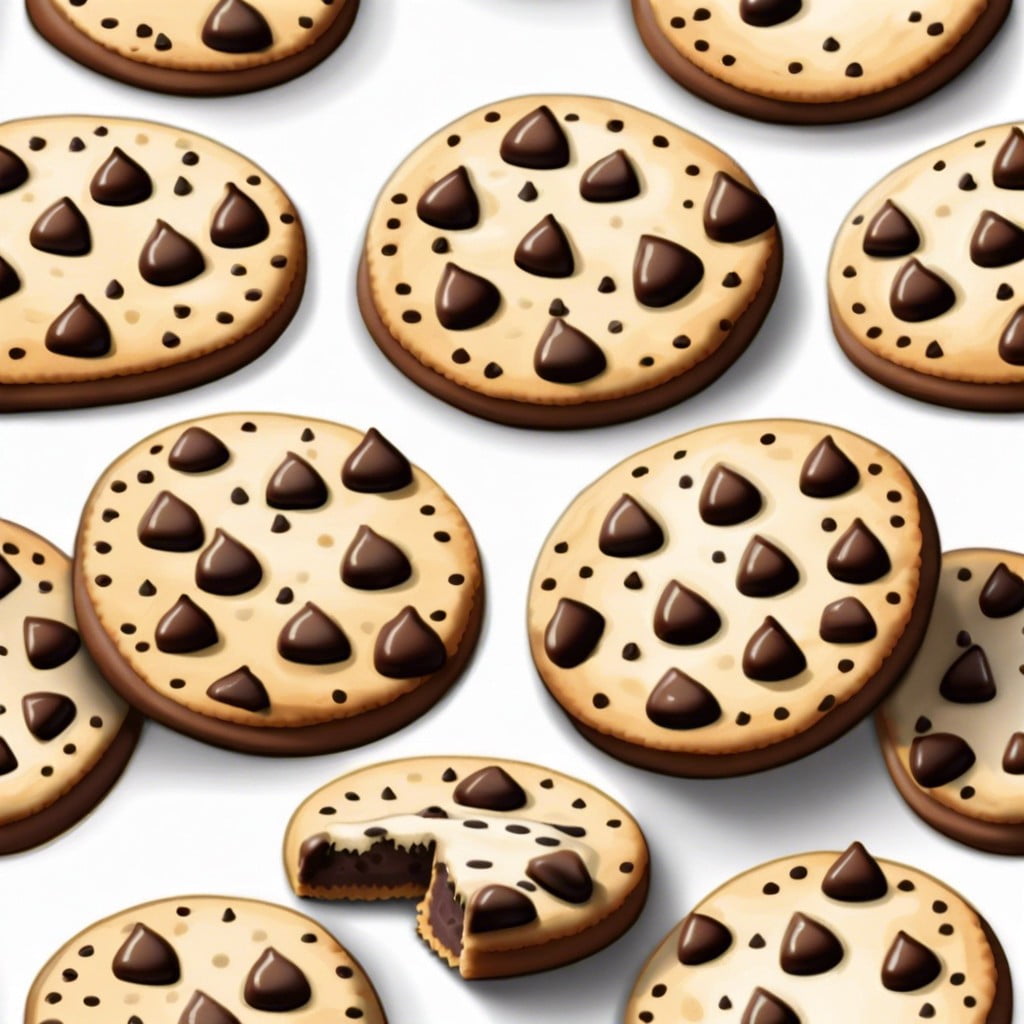Learn how to make rich and creamy chocolate ice cream with this step-by-step guide.
Key takeaways:
- Use high-quality cocoa powder for rich flavor
- Consider dairy-free alternatives like coconut or almond milk
- Add sweeteners like sugar, honey, or maple syrup
- Enhance flavor with vanilla extract and egg yolks
- Use thickening agents or glucose syrup for texture and consistency
Inside
Chocolate Ice Cream: Ingredient & Substitutions

High-quality cocoa powder forms the backbone of flavor in chocolate ice cream, lending a robust taste.
For a dairy-free version, coconut milk or almond milk can replace traditional cream.
Sweeten with granulated sugar, or opt for honey or maple syrup for natural sweetness.
Pure vanilla extract enhances the depth of chocolate flavor.
For a richer texture, use egg yolks, though they can be omitted.
Thickening agents like cornstarch or arrowroot powder serve as egg substitutes.
To avoid crystallization and ensure a smooth consistency, glucose syrup or invert sugar is recommended, though they are optional.
If replacing heavy cream with lower-fat alternatives, consider adding a tablespoon of alcohol, like vodka, to keep the ice cream soft, as it lowers the freezing point.
How to Make Chocolate Ice Cream
To create rich and creamy chocolate ice cream, begin by selecting a high-quality cocoa powder or a blend of cocoa powder and melted chocolate for depth of flavor. Whisk your cocoa or chocolate with sugar and a pinch of salt to balance sweetness and enhance chocolate notes.
Slowly incorporate milk, ensuring the chocolate mixture dissolves completely before adding heavy cream for richness.
For a smoother texture, temper egg yolks with a portion of the warm chocolate mixture before combining everything. Cook the custard over low heat until it thickens, ensuring not to boil to prevent curdling.
Strain the custard to remove any cooked egg bits, then chill thoroughly, ideally overnight, for a stable base.
Once chilled, churn the mixture in an ice cream maker until it reaches a soft-serve consistency. For those without an ice cream maker, intermittently whisking during freezing can help break up ice crystals.
Finally, freeze the churned ice cream for several hours to firm up before serving.
Best Homemade Chocolate Ice Cream Recipe
Achieving the richest flavor and creamiest texture lies in the balance of ingredients and the method of preparation. For the best homemade chocolate ice cream, use high-quality cocoa powder and real chocolate; the higher the cacao percentage, the deeper the flavor. Incorporate a mix of dairy—whole milk for lightness, heavy cream for creaminess—ensuring a smooth, scoopable result. Egg yolks add richness and act as an emulsifier, yielding a custard-based ice cream with a luxurious mouthfeel.
Opt for a custard base cooked to 170°F. It should coat the back of a spoon before cooling and churning; this ensures proper pasteurization and thickening. For an intense chocolate experience, melt chocolate into the custard base before it cools. Churning in an ice cream maker introduces air, which is crucial for proper texture. If an ice cream maker isn’t an option, a no-churn method can be used, typically involving condensed milk and whipped cream.
Aging the ice cream base in the refrigerator for at least four hours before churning enhances flavor depth. After churning, a post-freeze for several hours solidifies the consistency. Be mindful that homemade ice cream has less stabilizers than store-bought, so it freezes harder. A short rest at room temperature makes scooping easier without compromising its rich, creamy texture.
Nutrition Facts (per Serving)
Understanding the nutritional content of your homemade chocolate ice cream can help you enjoy it in moderation as part of a balanced diet. A typical serving size, which is about half a cup (approximately 4 ounces or 113 grams), generally contains:
- Calories: Depending on the ingredients used, a serving may range from 140 to 250 calories. Using full-fat cream and sugar will be at the higher end, while substitutions like low-fat milk and sugar alternatives can lower the caloric content.
- Fat: Fat content can vary from 7 to 16 grams. The type of cream, milk, and chocolate used plays a significant role in the fat percentage.
- Saturated Fat: This is often present in chocolate ice cream due to the high-fat dairy products and chocolate. An average serving can have around 4.5 to 10 grams of saturated fat.
- Carbohydrates: Carb counts are typically around 20 to 30 grams per serving, largely from sugars. The type of sweetener and chocolate influences the carbohydrate quantity.
- Protein: Moderate amounts of protein, ranging from 2 to 4 grams, can be found in a serving, contributed by the dairy ingredients.
- Fiber: Depending on the type of chocolate used, fiber content can be between 1 to 3 grams.
- Calcium: Each serving supplies a good amount of calcium, usually between 10 to 15% of the recommended daily value, thanks to the dairy ingredients.
It is essential to be mindful of these values, especially if you’re monitoring your intake for health reasons. Adjusting ingredients allows for control over these nutritional factors to suit dietary needs.




